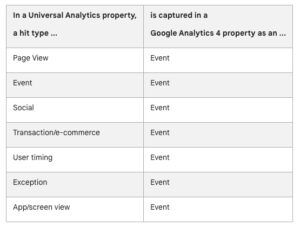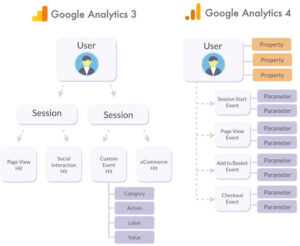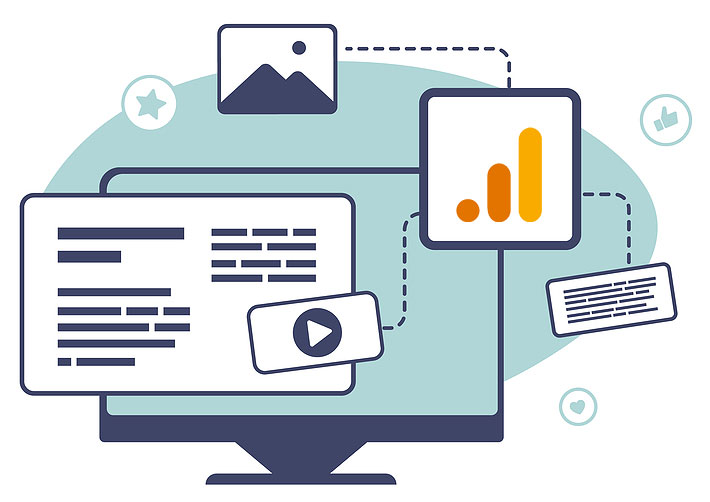Part 1 of many about GA4 and what is coming after UA
Hey there! Google Universal Analytics (UA) will sunset before you know it, and your analytics after UA will be dominated by Google Analytics 4 (GA4). I’m thrilled you’re joining me as we dive into the world of SEO analytics with GA4. GA4 is already emerging as the key to gaining comprehensive and user-centric insights into customer journeys across multiple devices and platforms. So, let’s dive in and uncover how GA4 can help us elevate our SEO game.
We might still be learning, but with GA4, we’ll be able to answer two critical questions: How do people find our website, and what do they do once they get there? The most significant change in GA4 is its user-centric approach to tracking and analysis. The new approach means we’ll look at the entire user experience rather than fragmented experiences on individual devices or mediums.
GA4 Events
Before we proceed, let’s familiarize ourselves with events in GA4. The platform is all about event-based tracking, simplifying the process of creating and customizing events, tracking conversions, and building reports. So, Events dominate the landscape of GA4. For example, in the table below, you can see that so many properties that we took for granted in UA are now specific events in GA4:

Now, let’s talk about setting up events. GA4 automatically collects specific event data, but we should set up event tracking for the events that aren’t captured natively. This gives us significantly more data flexibility and empowers us by making it easy to design and personalize events.

To make the most of GA4, we should start by auditing what our GA4 account is already tracking, understand the parameters we’d like to collect and think about the audiences and segments we’d like to build. We should also work backward to understand which events to track and consider event-tracking limitations when finalizing the list of custom events to collect.
In addition to defining events, there are a few GA4 settings we should be aware of. The native events are either web, app, or both. You can find a complete list of these events at Analytics Help.
One of the best things about GA4 is that it unlocks more powerful segmentation abilities, giving us better context around our organic performance. Segments are a subset of users, sessions, or events.
You can apply segments to explorations to focus on specific data sets. We can create segments based on users, sessions, and events, allowing us to ask essential questions and assess our SEO performance more effectively.
GA4 makes for better analytics
Google Analytics 4 is revolutionizing how businesses measure their online presence, and we’re learning about it together. With its advanced features and improved measurement capabilities, GA4 will help us better track and optimize our digital content to improve our SEO performance. So let’s keep learning and growing together!
Please remember, At the most basic level, you should extend the retention of user-level data to a maximum of 14 months as soon as we set up our GA4 property. Google is sunsetting Universal Analytics (UA) on July 1.
But don’t worry; many tools are out there to capture and store your UA data so you keep your historical UA data. Some of these tools host the event and will display it for you, and many more host it as google sheets.
In addition, you can use any number of visualization tools to access all of your historical performance data, giving you access to GA4 and UA metrics simultaneously for the same reports. If you need any help having your data retrieved or setup, please don’t hesitate to contact us.
Dream Warrior Group, a Los Angeles Based web design and digital marketing Company, providing solutions for your online marketing needs. Our expertise includes Search Engine Optimization (SEO), Social Media Posts & Marketing & Google PPC campaigns. Call us now at 818.610.3316 or click here.

